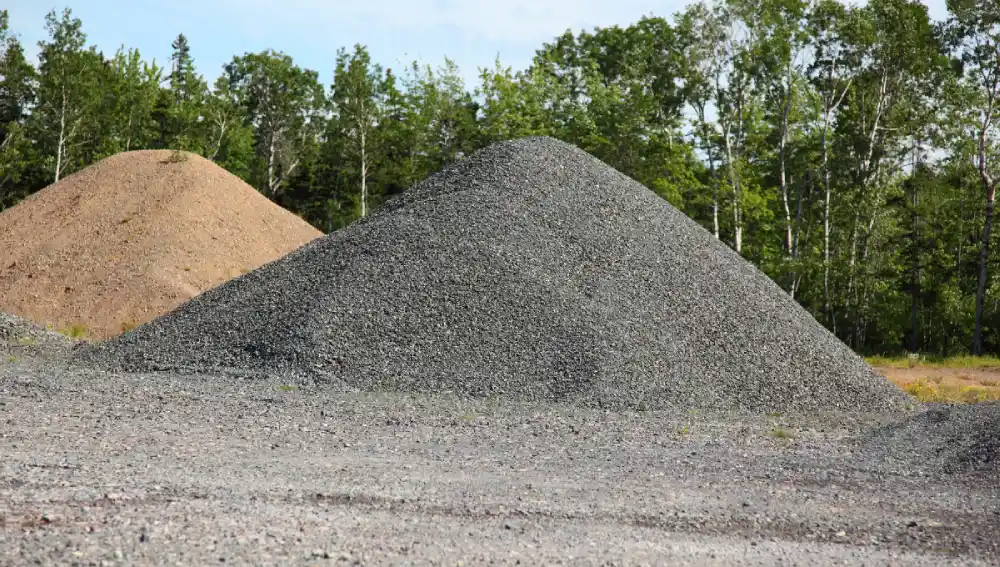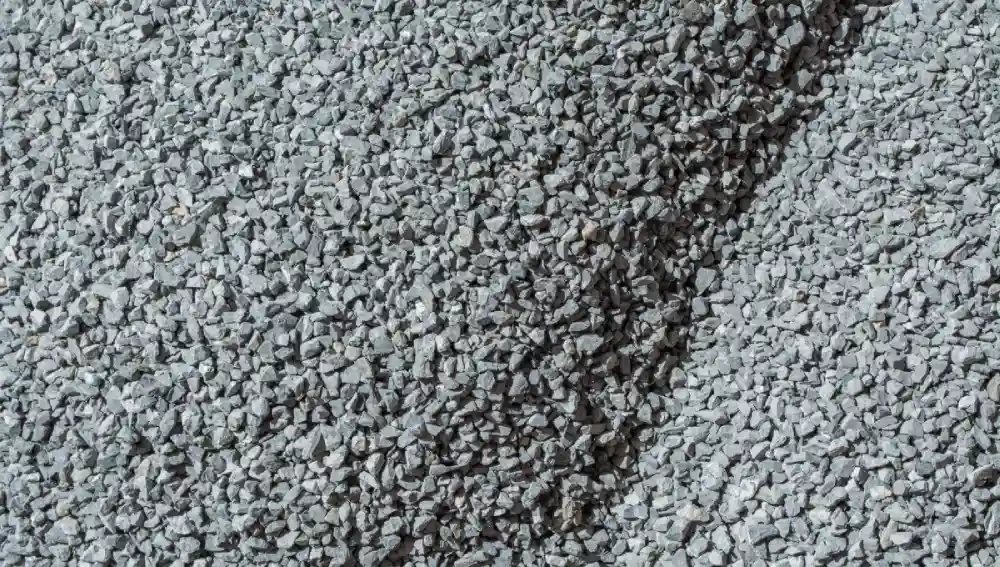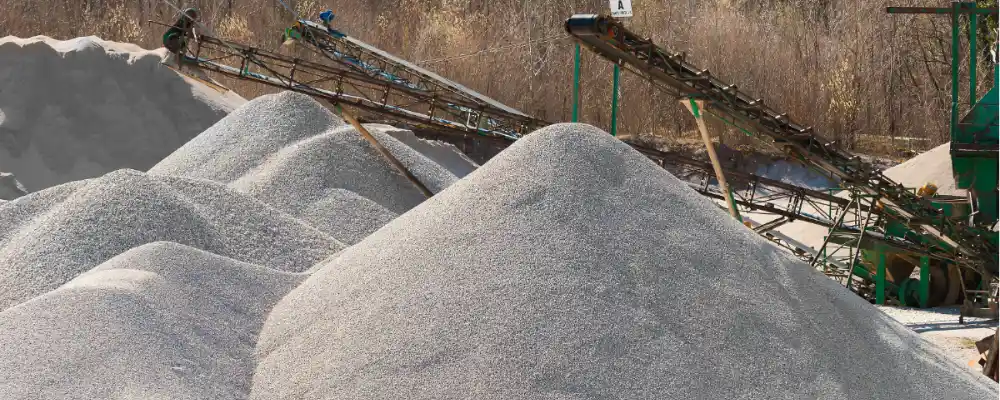Introduction
Coarse aggregates are granular materials. It is often used in construction for concrete making. Its major composition includes crushed stone, gravel, or recycled concrete. Coarse aggregates typically accounts for more than 60-80% of the volume of the concrete. Their durability depends on the quality of the coarse aggregate, significantly impacting the strength and workability of the concrete. Coarse aggregates are classified as those larger than 4.75 mm according to sieve analysis, with a common diameter range between 3/8 inch (approximately 9.5 mm) and 1.5 inch (approximately 38 mm)
Coarse aggregates have existed since ancient times, with notable use around 150 BC. The Romans used this concrete to build many important structures. Typical coarse aggregates are mostly smaller than two inches. It is obtained naturally from ground deposits of crushed stone, quarries, river gravels, etc. They can also be extracted by blasting the queries or crushing them.
Production and Characteristics of Coarse Aggregate

The methods of producing coarse aggregates have evolved considerably over time. The strength and angularity of the coarse aggregates are essential factors that affect the quality of the concrete mix. The production of coarse aggregate involves various operations,. Including blasting, crushing, and screening, primarily determined by the rock type used in its creation. It could be the metamorphic igneous or sedimentary.
Benefits of Coarse Aggregate
Coarse aggregate imparts several benefits to concrete construction:
- Coarse aggregate provides the required strength to concrete for heavy load- bearing structures. It increases the structural quality.
- Coarse aggregate gives better water resistance and maintains dimensional stability in concrete.
- It controls shrinkage and maintains balance in the heat retention during the curing process, which is crucial for cement hydration
- The coarse aggregate quantity determines the size and shape of the concrete mix.
- The coarse aggregate also determines the bonding of the cement paste.
Types of Coarse aggregate

Rounded Aggregate
Rounded aggregates generally occur naturally. They have a rounded and smooth surface., that improves workability and helps reduce the water demand.
These rounded aggregates can be easily found near the streams and riverbeds. The major source of rounded aggregates is from natural deposits. The smooth texture of the aggregates are used in concrete production. It is known for its workability and ease of handling. The use of rounded aggregates dates back to ancient times.
This helps reduce the usage of cement-based materials required in construction. The smooth surface of the rounded aggregate produces less friction and enhances the workability of the concrete. The major compositions of rounded aggregate are quad and granite, it is essential to note that rounded aggregates can include various materials such as sand, gravel, and other naturally occurring stones. Rounded aggregates can range in size from 0.1 inches to 10 inches(approximately 2.54 mm to 254 mm) across. It has a diameter range between 3/8 inch and 1.5 inch(approximately 9.525 mm to 38.1 mm). The smooth texture affects the bonding of the cement paste.
Irregular Aggregates
Irregular aggregates, characterized by their non-uniform shape, can decrease workability compared to rounded aggregates. Its abnormal shape is formed by friction.. It is mainly composed of gravel and small stones. The irregular aggregate has a rough surface, produced by crushing the largest stones. The use of irregular aggregate started with the advent of mechanical crushing techniques. It is used to provide strength and durability to the concrete mix. The irregular shape and rough surface help bring friction, increasing the strength of the concrete. It is mainly composed of limestone, trap rock, or granite. and have a higher void percentage ranges between 35 and 37%. These characteristicsIt plays a major role in the construction industry.
Angular Aggregates
It is formed at the intersections of rough surfaces and consists of well-defined edges formed by crushing the rocks. The maximum percentage of the void is found in the angular aggregate, resulting in decreased workability. It is composed of sharp angular edges created by crushing large stones.
The angular aggregate is popularly known for its higher interlocking capacity. This offers high strength to the concrete mix. It is composed of basalt, limestone, or granite. It improves the bonding of the cement with its rough surface texture. It comprehensively produces greater strength and stability in concrete structures with higher interlocking properties. It is used in pavement and road construction.
Flaky aggregates
Flaky aggregates are aggregates with the least dimension. Any aggregate with a thickness less than 60% of its mean dimension is classified as flaky aggregate. This implies that the thickness must be less than the length and width.
The flaky aggregate does not suit the production of concrete. It causes a severe impact on the workability and strength of the concrete mix. It is composed of different types of rocks. Its surface texture varies with the rock type. Flaky aggregates are elongated and flat, often influencing the overall performance of concrete.
Flaky and Elongated Aggregates
These are aggregates that are identified as both flat and elongated. These types of aggregates have a length that is greater than that of their thickness and width. The flaky and elongated aggregates are not suitable for the production of concrete. It creates a significant impact on the workability and strength of the cement. Its shape can affect the performance and workability of the concrete.
Characteristic Requirements of Coarse Aggregate
Grading of aggregate is an important process in the construction industry. It determines the particle size and distribution through sieve analysis. Key requirements include:
- The coarse aggregate must have comprehensive hardness and strength. This improves the overall strength of the concrete.
- The coarse aggregate must be free from impurities and layers of organic substances. It has a strong influence on the bonding of the aggregate with cement.
- The coarse aggregate should be resistant to moisture absorption. Excessive moisture absorption can affect the performance of the concrete.
- The coarse aggregate must be strong and resistant to chemical attacks and weathering.
- The specific gravity indicates the density of the coarse aggregate, ranging between 2.6 and 2.9. High specific gravity and bulk density are essential for aggregates. It effectively enhances the overall mass of the cement and contributes to its strength.
- The coarse aggregate should not contain harmful substances like chloride sulfate alkalis, which can affect the quality of the concrete.
Conclusion
Coarse aggregate is crucial in the construction industry. It provides the necessary strength and durability and determines the workability of the concrete. Understanding the different types, properties, and benefits can help with construction. Each has its own unique advantage and purpose. The right selection of type and size can improve the longevity and stability of the structure.

